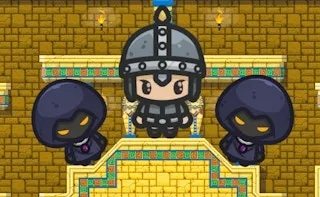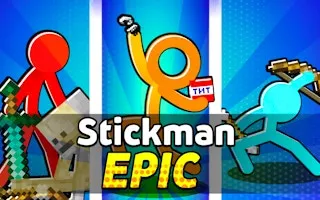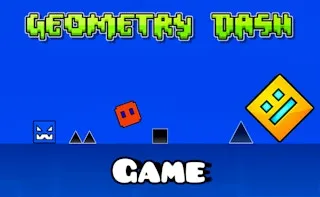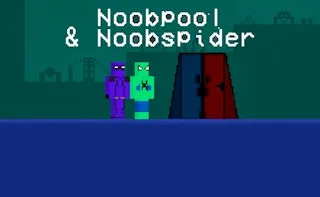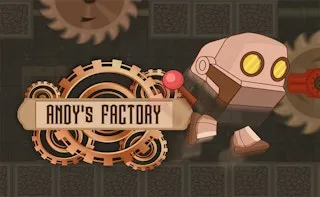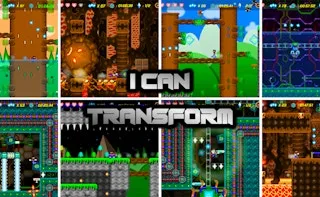Platformer Games
98 games in total. Page 1 of 3
Platformer games have captivated players for decades with their blend of precision, timing, and adventure. Explore the history and evolution of platformers, from Super Mario Bros. to modern indie hits.
Platformer games, often referred to as "jump-and-run" games, are one of the oldest and most beloved genres in video gaming. Whether you're navigating intricate puzzles or speeding through levels with precision timing, platformers offer a mix of challenge and simplicity that has enthralled gamers for generations. On PunyGame, the platformer category shines with a variety of exciting titles, each providing a unique take on this timeless genre.
The Origins and Evolution of Platformer Games
Platformers trace their roots back to the early days of gaming. With titles like Super Mario Bros. and Donkey Kong setting the standard, platformers became synonymous with precision-based challenges. These games emphasized running, jumping, and overcoming obstacles, creating a gameplay experience that is easy to pick up but difficult to master. From their inception, platformers have emphasized a delicate balance between straightforward mechanics and complex level designs. As technology advanced, so did the complexity of platformers. The introduction of 16-bit graphics allowed developers to create more intricate environments and sharper animations, elevating the genre to new heights. Games like Sonic the Hedgehog added speed and momentum to the classic platforming formula, introducing new mechanics that kept players on their toes. The rise of 3D graphics in the mid-90s, spearheaded by games like Super Mario 64, revolutionized the genre, allowing players to explore expansive worlds and engage in more varied gameplay.What Defines a Platformer?
At its core, a platformer is a game where players control a character navigating through levels by jumping, running, and dodging obstacles. Success in these games often hinges on mastering timing, precision, and the character's movement. While early platformers like Pitfall! and Space Panic were simple in design, modern platformers incorporate a variety of complex mechanics, such as puzzle-solving and combat. Platformers are characterized by their use of platforms, which players must traverse by making precise jumps. These platforms can be stationary or moving, adding a layer of challenge that requires quick reflexes and keen observation. Environmental hazards like spikes, pits, and enemies further heighten the difficulty, making the gameplay both exhilarating and rewarding. Power-ups, special abilities, and collectible items often play a key role, helping players overcome tougher challenges.The Sub-genres of Platformer Games
Platformers have evolved into various sub-genres, each bringing a unique twist to the core mechanics. Puzzle platformers incorporate brain-teasing challenges that require players to manipulate the environment or solve intricate puzzles to progress through levels. Games like Braid and Limbo exemplify this approach, where clever level design becomes the puzzle itself. These games often blend artistic visuals with a contemplative atmosphere, offering a more cerebral take on the traditional platformer formula. Another popular variation is the Metroidvania sub-genre, a fusion of platforming and exploration. Named after the iconic Metroid and Castlevania series, these games encourage players to explore interconnected worlds, unlocking new areas and abilities as they progress. The non-linear nature of these games allows for deeper exploration and replayability, making them a favorite among fans who enjoy a more open-ended experience. In contrast, Endless runners simplify the platforming experience by automating movement, leaving players to focus solely on timing jumps and avoiding obstacles. This sub-genre, popularized by mobile games like Temple Run, emphasizes reflexes and high scores over level completion, offering a fast-paced and accessible take on platforming.Iconic Platformer Games
No discussion of platformers would be complete without mentioning the genre's most iconic titles. The Super Mario Bros. series remains the quintessential platformer, setting the gold standard for gameplay, level design, and character development. Mario's simple mechanics, coupled with imaginative worlds and innovative power-ups, have cemented the series as one of the most influential in gaming history. Sonic the Hedgehog introduced a different take on the platformer, with its emphasis on speed and momentum. Sonic's ability to dash and spin through levels brought a new dynamic to the genre, rewarding players who could master the physics of speed-based gameplay. Sonic’s iconic blue blur has become a symbol of fast-paced platforming action, appealing to players who crave high-octane challenges. Modern indie titles like Celeste and Hollow Knight have redefined what a platformer can be. Celeste combines tight controls with a heartfelt narrative, focusing on themes of mental health and personal growth, while Hollow Knight blends platforming with atmospheric exploration in a vast, interconnected world. These games demonstrate that the platformer genre continues to evolve, offering fresh experiences for both veteran players and newcomers alike.Why Platformers Remain Popular Today?
Platformers have a universal appeal that transcends generations and platforms. Their straightforward mechanics make them accessible to players of all skill levels, while their increasing complexity and variety of sub-genres provide depth for more experienced gamers. The genre's timeless nature is also a result of its adaptability—platformers can be simple side-scrollers or complex, open-world experiences, depending on the developer's vision. Moreover, platformers often serve as a canvas for creativity, with developers experimenting with art styles, soundtracks, and storytelling. Indie games like Ori and the Blind Forest have raised the bar for artistic expression within the genre, using hand-drawn visuals and orchestral soundtracks to craft deeply immersive worlds. The ability to evoke emotion through gameplay, visuals, and music is one of the reasons platformers continue to resonate with players today. In addition, the rise of user-generated content and level creation tools has breathed new life into the genre. Games like Super Mario Maker allow players to create and share their own platforming levels, fostering a community of creators and challenging even the most skilled players with devious level designs. This interaction between developers and players has helped keep the genre relevant in the modern gaming landscape.Platformer Games on PunyGame
The platformer games available on PunyGame offer a wide range of experiences, from classic 2D side-scrollers to more modern takes on the genre. Players can dive into thrilling adventures, solve complex puzzles, and test their reflexes across various levels. Whether you're a fan of retro-inspired games or looking for a new challenge, PunyGame's platformer collection has something for everyone. The platformer category on PunyGame continues the tradition of excellence in this genre, featuring titles that emphasize precise controls, creative level design, and engaging gameplay. With a diverse selection of games, players can experience the timeless joy of platforming, whether they are jumping over gaps, avoiding enemies, or solving intricate puzzles. The combination of classic mechanics and modern innovations ensures that platformer games remain a cornerstone of gaming entertainment.PunyGame © 2022. All rights reserved.


